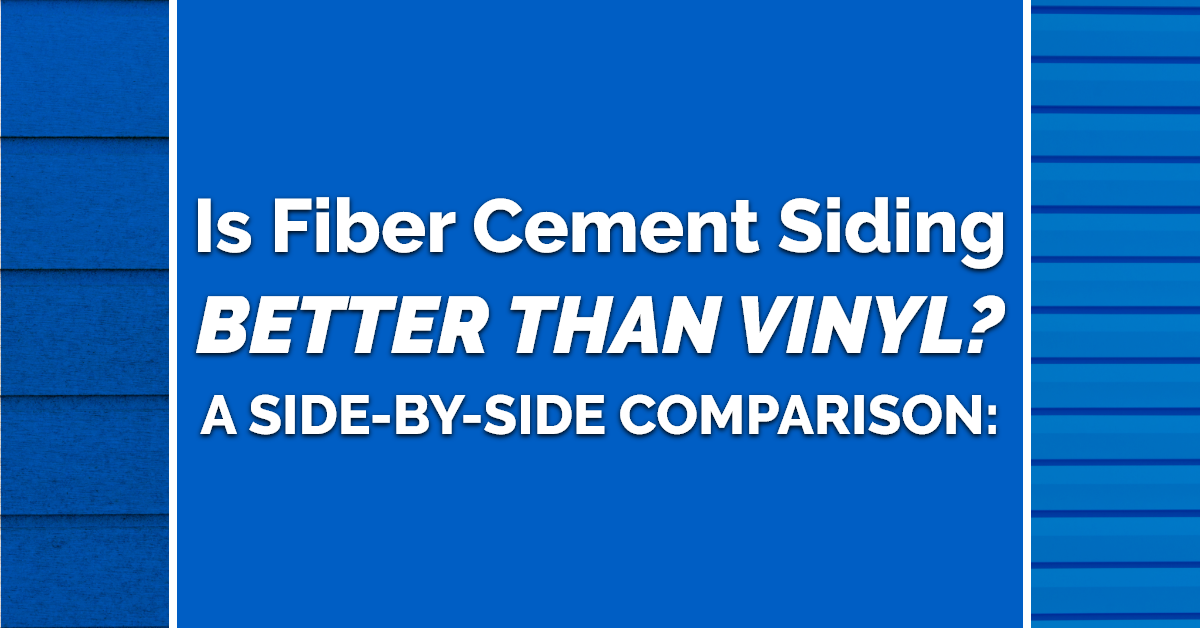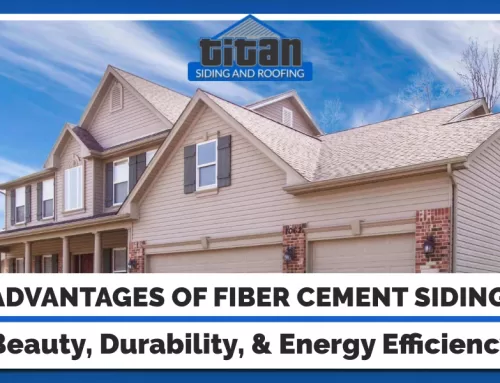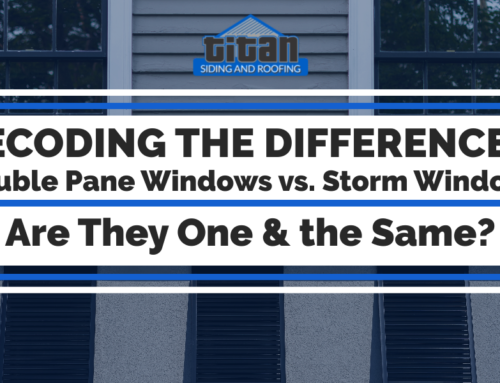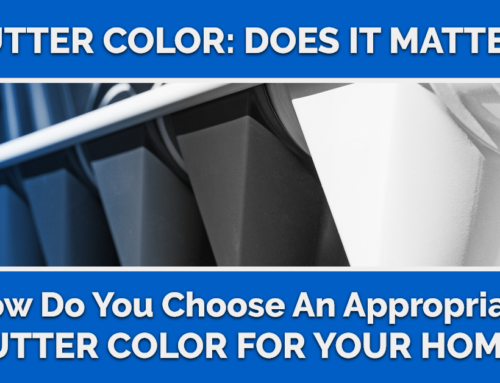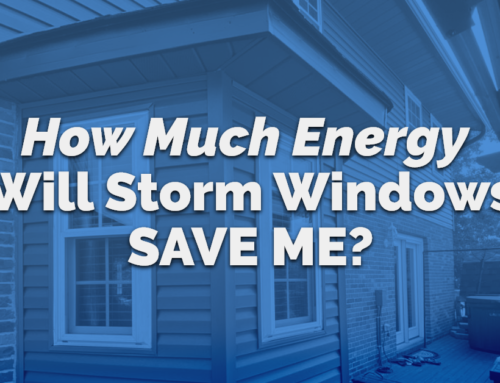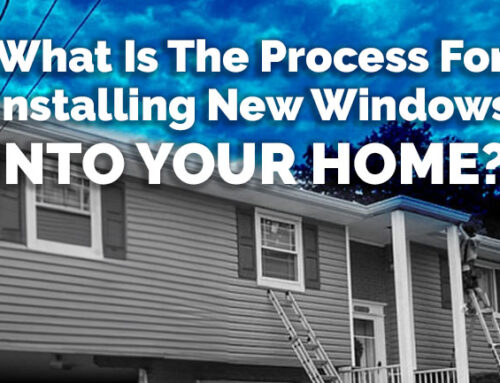Your choice of siding can enhance your home’s comfort and curb appeal. It can also increase your home’s value. There’s a wide and expanding variety of siding materials to choose from. Fiber cement and vinyl are among the most popular options for Ohio homeowners. You may be wondering whether fiber cement siding is better than vinyl. Below is a comparison between fiber cement and vinyl to help you make the best siding decision.
An Overview of Fiber Cement and Vinyl Siding
Fiber cement siding is a composite material comprising cement reinforced with cellulose fibers. You can order fiber cement siding pre-stained or pre-painted. You can also do so after the professional installation process. Fiber cement siding can vary in sheet sizes, widths, thickness, and density.
Vinyl siding is plastic exterior siding made primarily from PVC resin. 80 percent of vinyl siding is PVC resin. The other 20 percent includes materials that give it color, gloss, durability, and flexibility.
Advantages and Disadvantages of Fiber Cement Siding
Fiber cement siding offers the following benefits to homeowners:
Durability – One of the main benefits of fiber cement is its long life span. Fiber cement siding can withstand environmental elements, wear, and impacts. It’s also resistant to pests (termites and ants) and doesn’t rot.
These properties make fiber cement one of the longest-lasting siding materials. They typically come with extended warranties of up to 50 years.
Fire resistance – Fiber cement has a high fire resistance rating. The components are non-combustible and can’t ignite under a direct flame. Vinyl siding, on the other hand, can easily melt from high heat.
Style variety – Fiber cement has a striking natural look and offers plenty of options for aesthetics and curb appeal. You have plenty of designs, textures, and colors to choose from.
Imitation abilities – Fiber cement is the best siding option to emulate the attractive wood look. You can paint realistic wood grains, and its texture has a natural wood feel.
Minimal maintenance – Fiber cement siding is considerably low maintenance compared to other options like wood or metal. It requires minimal upkeep to keep it looking brand new.
Just like any construction material, fiber cement also has its drawbacks. Below are the disadvantages to consider:
Upfront price – Fiber cement siding has a considerably higher up-front price than vinyl siding. The installation costs are also higher. However, it can make up for the cost in terms of longevity and low maintenance.
Poor energy efficiency – Fiber cement siding is less energy-efficient than other siding materials. With fiber cement, you’ll need additional wall insulation.
Installation concerns – Fiber cement has a more complicated installation process than vinyl. As such, installation takes longer and costs more than vinyl.
Cutting fiber cement also generates silica dust. Long-term exposure can be harmful if inhaled during the cutting process. Hiring a professional roofing company with experience working with this material is essential.
Pros and Cons of Vinyl Siding
Installing vinyl siding also offers several notable benefits for homeowners. These include:
Low Cost – Upfront cost is a major consideration for many homeowners. Vinyl siding is by far the cheapest siding option. The installation cost is also much lower than fiber cement.
Durability – Vinyl siding is also highly durable. It’s designed to withstand environmental elements like excess moisture. Vinyl siding is also resistant to rot, rust, and corrosion. The siding can last anywhere between 10 to 30 years, depending on climate.
Easy installation – Vinyl is one of the easiest siding options to install. It’s light and features pre-drilled holes, making it easy to fit studs. Also, installation doesn’t require stain, paint, or caulk. As such, the process is much faster and cheaper than that of fiber cement.
Energy-efficiency – Vinyl siding has better thermal efficiency than fiber cement siding. Insulated vinyl siding prevents heat loss through thermal bridging. It doesn’t feature gaps that allow cool and warm air to escape. Vinyl siding’s energy efficiency helps you save money long-term through reduced utility bills.
Similarly, vinyl siding has several drawbacks. Below are some of the ones you should be aware of:
Heat Sensitivity –Being plastic and having a thin profile means that vinyl siding is susceptible to high heat. While it’s more flame-resistant than wood, it’s not as fire-resistant as fiber cement.
Warping and cracking – Warping is a common complaint of vinyl siding in hot climates. Warping can change the shape of some sections, which will require replacement. Cracking is also an issue in very cold areas. In such environments, fractures can occur when objects strike the siding. Vinyl siding isn’t the best option in areas prone to temperature extremes.
Aesthetics – While vinyl offers a variety of designs and colors, it isn’t as visually pleasing as fiber cement.
Sustainability – Many people consider vinyl harmful to the environment and unsustainable. While some manufacturers use recycled material, the plastic usually ends up in landfills.
Is Fiber Cement Siding Better Than Vinyl?
Overall, fiber cement siding is not conclusively better than vinyl siding. Each option has its own merits and drawbacks. Both are viable siding options with lots to offer.
Homeowners have different goals, preferences, and budgets for their renovation projects. Your home’s design, the local environment, and your overall budget should influence your decision.
Professional installation by a reputable roofing and siding company is crucial once you’ve made your choice. Are you looking for reliable roofing and siding services in Ohio’s Greater Cincinnati and Dayton areas?
Contact Titan Siding & Roofing and have our skilled and experienced team handle your next home renovation project.

